Delayed access to feed early post-hatch affects the development and maturation of gastrointestinal tract microbiota in broiler chickens
- PMID: 36002800
- PMCID: PMC9404604
- DOI: 10.1186/s12866-022-02619-6
Delayed access to feed early post-hatch affects the development and maturation of gastrointestinal tract microbiota in broiler chickens
Abstract
Background: The first two weeks of post-hatch (PH) growth in broilers (meat-type birds) are critical for gut development and microbiota colonization. In the current broiler production system, chicks may not receive feed and water for 24 to 72 h due to variations in hatching time and hatchery management. Post-hatch feed delay affects body weight, feed efficiency, mortality, and gut development. The goal of this study was to investigate changes in the microbiome in broiler chickens early PH and the effect of delayed access to feed on the microbiota.
Results: Chicks either received feed and water immediately after hatch or access to feed was delayed for 48 h to mimic commercial hatchery settings (treatment, TRT). Both groups were sampled (n = 6) at -48, 0, 4 h, and 1 (24 h), 2 (48 h), 3 (72 h), 4 (96 h), 6 (144 h), 8 (192 h), 10 (240 h), 12 (288 h) and 14 (336 h) days PH. Ileal (IL) and cecal (CE) epithelial scrapings (mucosal bacteria, M) and digesta (luminal bacteria, L) were collected for microbiota analysis. Microbiota was determined by sequencing the V3-V4 region of bacterial 16S rRNA and analyzed using QIIME2. The microbiota of early ileal and cecal samples were characterized by high abundance of unclassified bacteria. Among four bacterial populations (IL-L, IL-M, CE-L, CE-M), IL-M was the least affected by delayed access to feed early PH. Both alpha and beta diversities were affected by delayed access to feed PH in IL-L, CE-M and CE-L. However, the development effect was more pronounced. In all four bacterial populations, significant changes due to developmental effect (time relative to hatch) was observed in taxonomic composition, with transient changes of bacterial taxa during the first two weeks PH. Delayed access to feed has limited influence on bacterial composition with only a few genera and species affected in all four bacterial populations. Predicted function based on 16S rRNA was also affected by delayed access to feed PH with most changes in metabolic pathway richness observed in IL-L, CE-L and CE-M.
Conclusions: These results show transient changes in chicken microbiota biodiversity during the first two weeks PH and indicate that delayed access to feed affects microbiota development. Proper microbiota development could be an important factor in disease prevention and antibiotic use in broiler chickens. Moreover, significant differences in response to delayed access to feed PH between luminal and mucosal bacterial populations strongly suggests the need for separate analysis of these two populations.
Keywords: 16S; Ceca; Chicken; Delayed access to feed; Ileum; Microbiota.
© 2022. The Author(s).
Conflict of interest statement
The authors declare no competing interest.
Figures

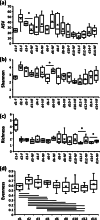


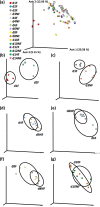
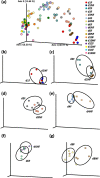
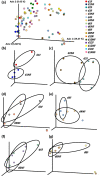

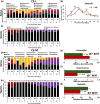

Similar articles
-
Physiological effects of in ovo delivery of bioactive substances in broiler chickens.Front Vet Sci. 2023 Mar 16;10:1124007. doi: 10.3389/fvets.2023.1124007. eCollection 2023. Front Vet Sci. 2023. PMID: 37008350 Free PMC article. Review.
-
Effect of delayed feeding post-hatch on expression of tight junction- and gut barrier-related genes in the small intestine of broiler chickens during neonatal development.Poult Sci. 2020 Oct;99(10):4714-4729. doi: 10.1016/j.psj.2020.06.023. Epub 2020 Jul 3. Poult Sci. 2020. PMID: 32988506 Free PMC article.
-
Transition of microbiota in chicken cecal droppings from commercial broiler farms.BMC Vet Res. 2021 Jan 6;17(1):10. doi: 10.1186/s12917-020-02688-7. BMC Vet Res. 2021. PMID: 33407476 Free PMC article.
-
The effect of delayed feeding post-hatch on caeca development in broiler chickens.Br Poult Sci. 2021 Oct;62(5):731-748. doi: 10.1080/00071668.2021.1912291. Epub 2021 May 5. Br Poult Sci. 2021. PMID: 33834926
-
Managing Gut Microbiota through In Ovo Nutrition Influences Early-Life Programming in Broiler Chickens.Animals (Basel). 2021 Dec 7;11(12):3491. doi: 10.3390/ani11123491. Animals (Basel). 2021. PMID: 34944266 Free PMC article. Review.
Cited by
-
Physiological effects of in ovo delivery of bioactive substances in broiler chickens.Front Vet Sci. 2023 Mar 16;10:1124007. doi: 10.3389/fvets.2023.1124007. eCollection 2023. Front Vet Sci. 2023. PMID: 37008350 Free PMC article. Review.
-
Temporal dynamics of the chicken mycobiome.Front Physiol. 2022 Dec 15;13:1057810. doi: 10.3389/fphys.2022.1057810. eCollection 2022. Front Physiol. 2022. PMID: 36589448 Free PMC article.
-
Gut Microbiome Development in Rock Pigeons: Effects of Food Restriction Early in Life.Microorganisms. 2025 May 23;13(6):1191. doi: 10.3390/microorganisms13061191. Microorganisms. 2025. PMID: 40572081 Free PMC article.
-
Boosting Broiler Health and Productivity: The Impact of in ovo Probiotics and Early Posthatch Feeding with Bacillus subtilis, Lactobacillus fermentum, and Enterococcus faecium.Microorganisms. 2025 May 27;13(6):1219. doi: 10.3390/microorganisms13061219. Microorganisms. 2025. PMID: 40572108 Free PMC article.
-
Temporal stability and community assembly mechanisms in healthy broiler cecum.Front Microbiol. 2023 Sep 13;14:1197838. doi: 10.3389/fmicb.2023.1197838. eCollection 2023. Front Microbiol. 2023. PMID: 37779716 Free PMC article.
References
Publication types
MeSH terms
Substances
LinkOut - more resources
Full Text Sources

